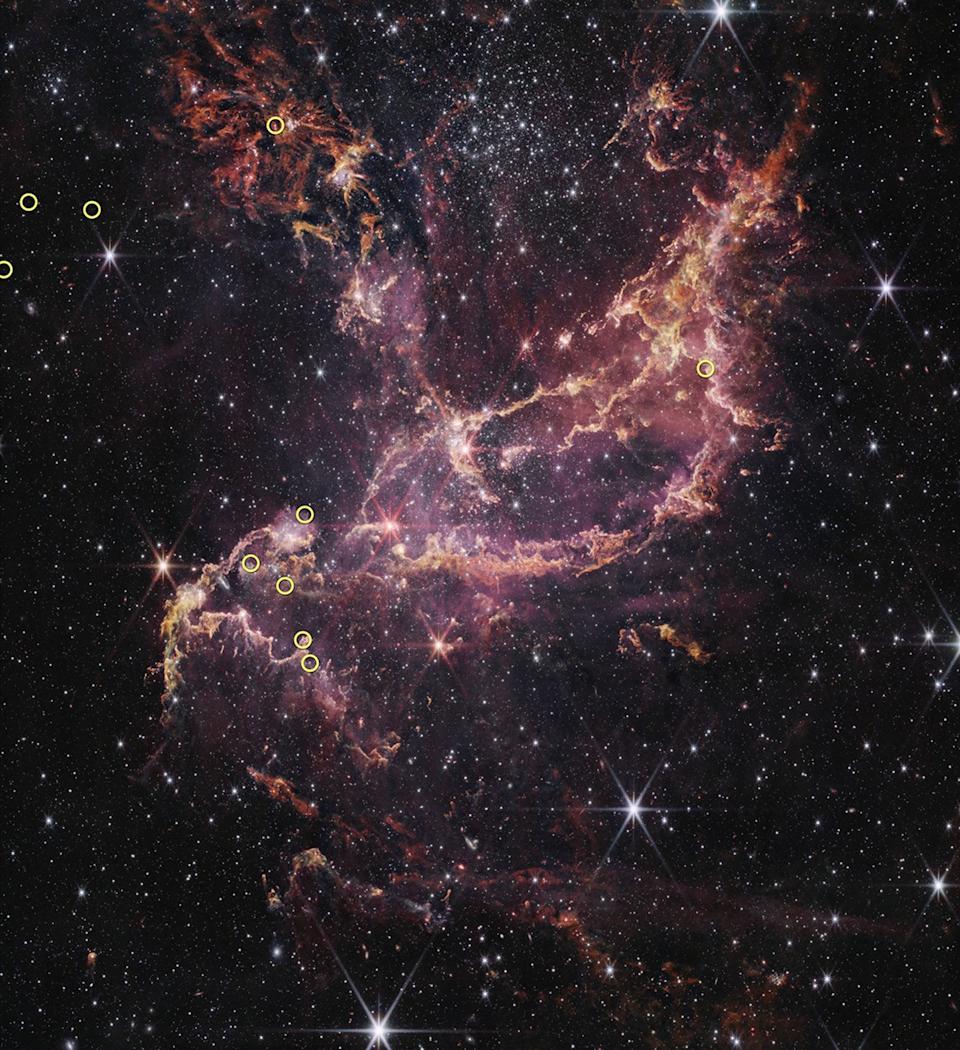NASA says it was ready to make use of the James Webb telescope to seize photos of planet-forming disks round historical stars that problem theoretical fashions of how planets can type. The pictures help earlier findings from the Hubble telescope that haven’t been capable of be confirmed till now.
The brand new Webb extremely detailed photos had been captured from the “Small Magellanic Cloud,” a neighboring dwarf galaxy to our residence, the Milky Method. The Webb telescope was particularly targeted on a cluster known as NGC 346, which NASA says is an efficient proxy for “related circumstances within the early, distant universe,” and which lacks the heavier parts which have historically been linked to planet formation. Webb was capable of seize a spectra of sunshine which suggests protoplanetary disks are nonetheless hanging out round these stars, going towards earlier expectations that they’d have blown away in a number of million years.
A photograph of NGC 346 with stars with historical planetary disks circled in yellow.
“Hubble observations of NGC 346 from the mid 2000s revealed many stars about 20 to 30 million years previous that appeared to nonetheless have planet-forming disks,” NASA writes. With out extra detailed proof, that concept was controversial. The Webb telescope was capable of fill in these particulars, suggesting the disks in our neighboring galaxies have a for much longer time frame to gather the mud and fuel that varieties the premise of a brand new planet.
As to why these disks are capable of persist within the first place, NASA says researchers have two doable theories. One is that the “radiation strain” expelled from stars in NGC 346 simply takes longer to dissipate planet-forming disks. The opposite is that the bigger fuel cloud that’s essential to type a “Solar-like star” in an surroundings with fewer heavy parts would naturally produce bigger disks that take longer to fade away. Whichever principle proves appropriate, the brand new photos are lovely proof that we nonetheless don’t have a full grasp of how planets are fashioned.


